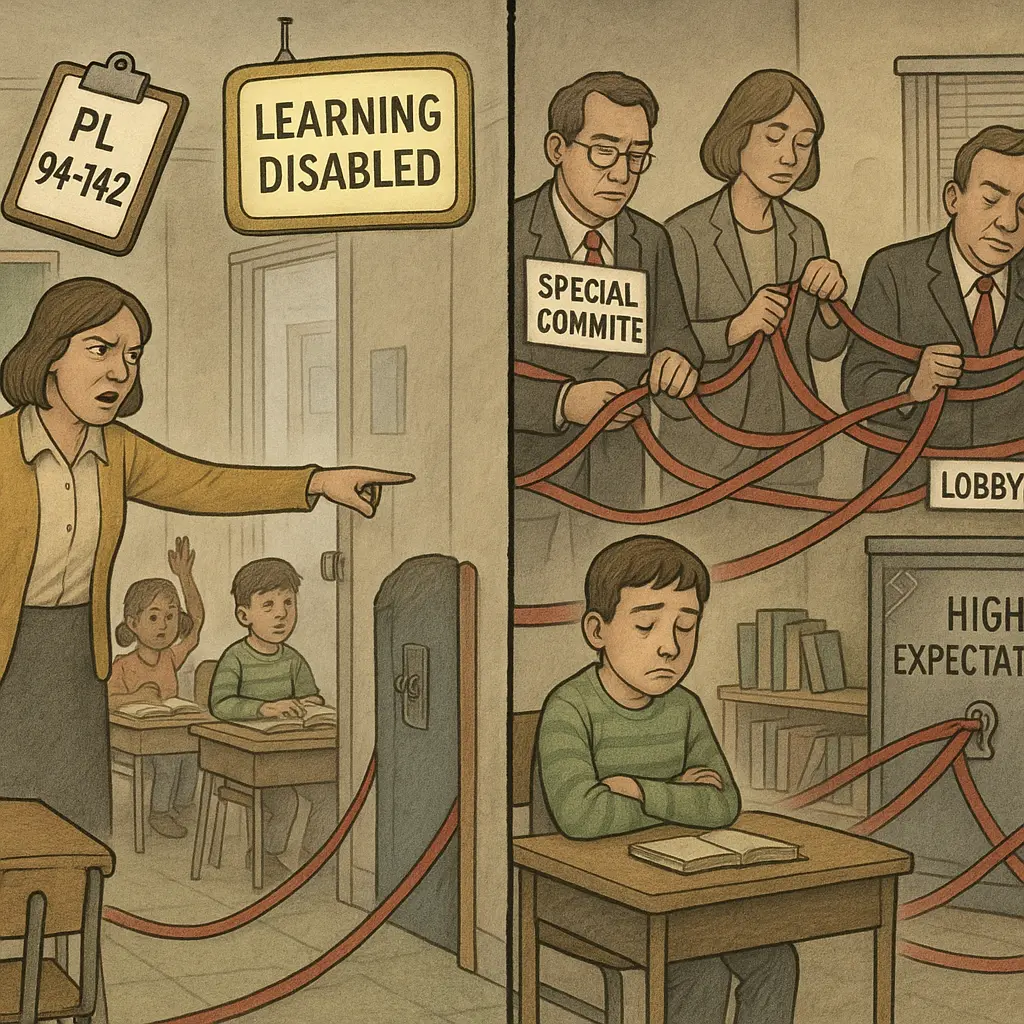
An excerpt from The Politics of Education K-12.
The Rise of Special Education After PL 94-142
Special education in public schools has evolved significantly since the late 1970s, following the introduction of PL 94-142 and the new category of “learning disabled.” Initially intended to support students with genuine learning challenges, the category expanded to include many students performing below grade level.
For example, a general education fourth grader reading at a fourth-grade level was considered average, while a learning-disabled child reading at a second-grade level received the special education label. This expansion led to unintended consequences throughout the education system.
Learn more about PL 94-142 here.
Labeling and Lowered Expectations
Teachers, faced with poorly performing or misbehaving students, often referred them for special education services. Testing would confirm these students’ low academic performance, leading to their transfer into smaller special education classrooms. While this move often made classroom management easier, it also resulted in lower academic expectations and a dumbing down of the curriculum.
When the public complains about weakened educational standards, this is frequently where it begins—within the special education system.
Push-In vs. Pull-Out Special Education Models
Once labeled, many students experienced a reduced curriculum, easier materials, and different testing conditions. Whether through pull-out programs or the push-in approach where special education teachers assist within general classrooms, the outcomes were often the same: lower expectations and insufficient academic support.
Response to Intervention (RTI) emerged as an alternative, emphasizing interventions before classifying students as special education. However, the deeply entrenched systems within special education make rapid change challenging.
The Special Education Lobby and Systemic Challenges
The special education system has become a powerful lobby, with Committees on Special Education, specialized staff, regulations, and advocacy groups influencing policies across the country. As a result, despite consuming significant resources, special education in public schools often fails to deliver measurable academic success.
This system, while well-intentioned, has become one of many anchors slowing down public education, consuming funds that could be redirected toward effective interventions benefiting all students.
Moving Forward: Rethinking Special Education
We must examine whether current special education practices truly serve our students. If research and data show that alternative interventions outside of the classroom produce better outcomes, we should be willing to adjust our approach—just as we expect doctors to adapt treatments based on new evidence.
Special education in public schools should not institutionalize low expectations but instead strive to provide real opportunities for student success.
For a deeper dive into how education policies affect student outcomes, read Lonnie Palmer’s book, The Politics of Education K-12, here.
Related Reading
Curious about how school district boundaries and segregation impact equity in schools? Read this analysis on charter schools and segregation here.
References
- U.S. Department of Education
- Jose L. Martin, “Legal Implications of Response to Intervention and Special Education Identification,” RTI Action Network, 2016. Read here.